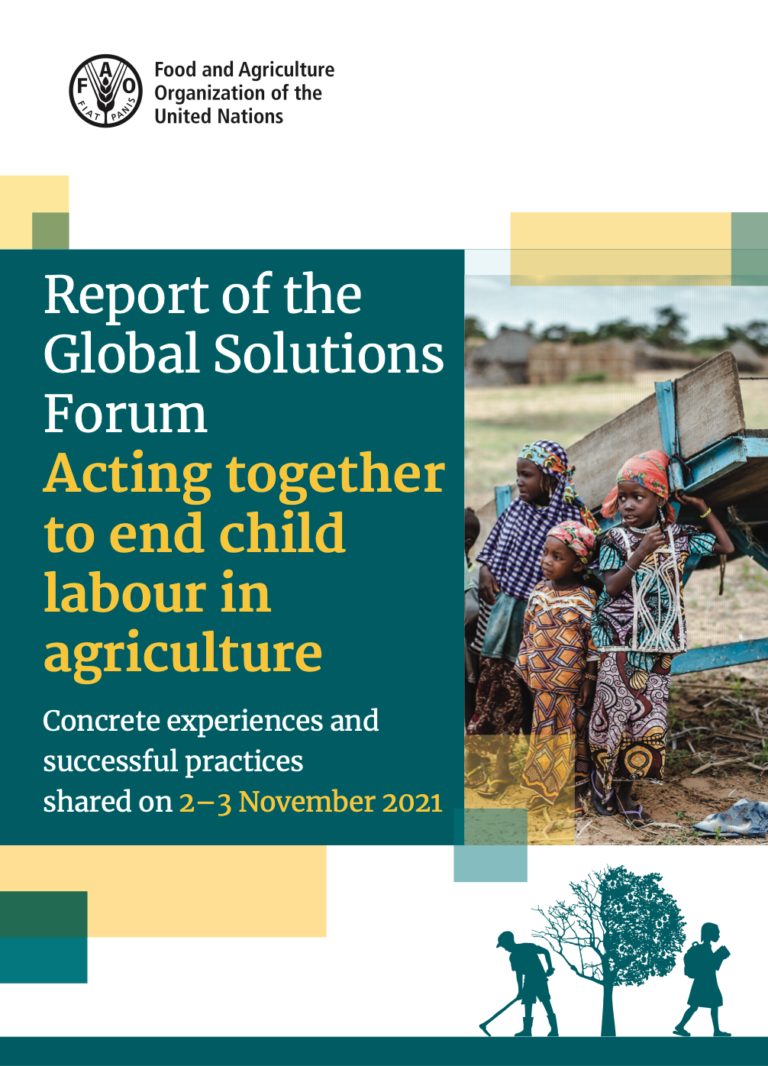Child labour is a serious violation of human rights, and yet many vulnerable families worldwide engage their children in work as a survival strategy. The figures from the 2020 International Labour Organization (ILO) and the United Nations International Children’s Emergency Fund (UNICEF) global estimates are alarming: almost one in ten of all children worldwide is engaged in child labour, and the largest share remains in agriculture, with 112 million children in total – 70 percent of all child labour (ILO and UNICEF, 2021). Furthermore, the COVID-19 pandemic, in addition to other crises, has led to school closures and has caused an unprecedented decline in economic activity and loss of jobs all over the world, hitting agriculture and food systems hard and increasing the risk of pushing more children into child labour (ILO and UNICEF, 2020).
2021 was the International Year for the Elimination of Child Labour, as proclaimed by the United Nations General Assembly in light of Sustainable Development Goal (SDG) Target 8.7, which seeks to eliminate all forms of child labour by 2025. If the world is to achieve this target, a strong new momentum and commitment are required, with the involvement of agricultural stakeholders and their partners, to alleviate poverty and hunger. Ending child labour is a prerequisite to achieving zero hunger and ensuring sustainable agrifood systems.

